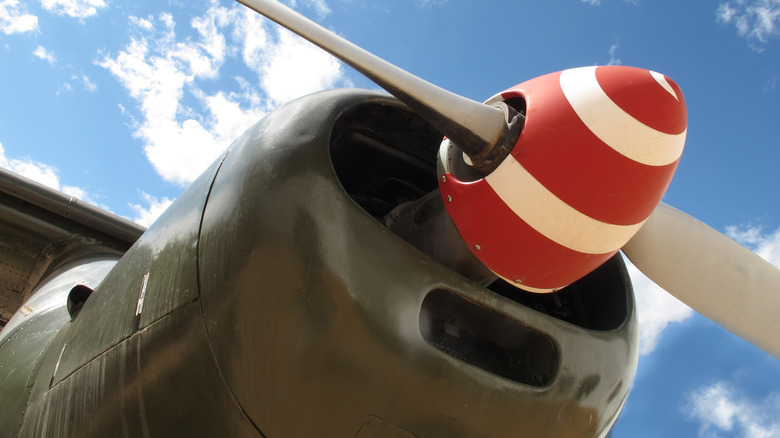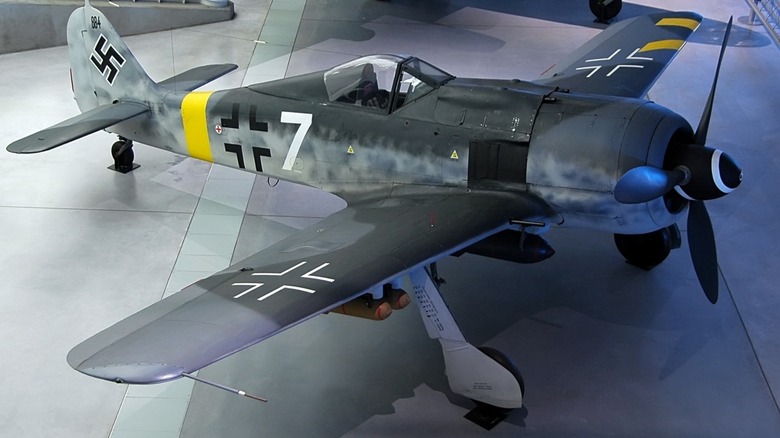Why Did German WW2 Fighter Planes Have Spirals On The Nose?
Every country that participated in the World War II air war had more than a few types of airplanes, but their design schemes could be distinguished throughout the conflict. The Americans liked to paint women on their planes, and many aircraft like bombers featured unique nose art. Whether pilots and crews drew pinups or painted sharks on their military aircraft, something was often painted to personalize WW2 planes.
In Germany, things regarding nose art were different from in the U.S., and more restrained. The most common characteristic of German fighters during WWII wasn't a pinup on the side; it was a spiral painted on the nose cone. You can find images from the conflict showing all kinds of spirals painted on fighter planes, and they could vary in color as well.
Like anything during warfare, there's a reason for the spiral. The main reason was safety, as it offered a visual cue to people working in the ground crew when they were near a lot of noisy and active aircraft. Another reason dealt with some airplane models' startup procedures. The practice continues to influence the design of modern aircraft, some of which feature spirals.
The painted spirals of Luftwaffe fighters during WWII
The Germans primarily painted spirals on the nosecones of the Messerschmitt Bf 109 and the Focke-Wulf Fw 190, two of the best German fighter planes of WW2. The spirals worked well to promote safety.
Imagine working on a flight line in a war zone — planes are constantly landing and taking off, people are running around with explosives, and it's utter chaos. It's also incredibly loud, and some German planes had more than one engine, so it could get very loud indeed. The spiral has a way of drawing the eye, and when it was too loud to hear a propeller spinning just a few feet away, it helped to have something to look at. Otherwise, you run the risk of having an abrupt end to your day — and life.
The second reason also had to do with safety, related to startup procedures. Starting the Bf 109 required a technician to jump onto the starboard wing and physically crank the engine so the plane could be started. Other aircraft required manually spinning the blades before fuel could be injected and ignited. The markings were distinctive enough to make it possible for the maintenance crew to communicate with the pilot visually to coordinate everything.
While the spiral system worked for the Germans, other nations didn't implement it, though some used it sparingly. Typically, other countries painted the tips of their planes' propellers yellow for the same purpose.

